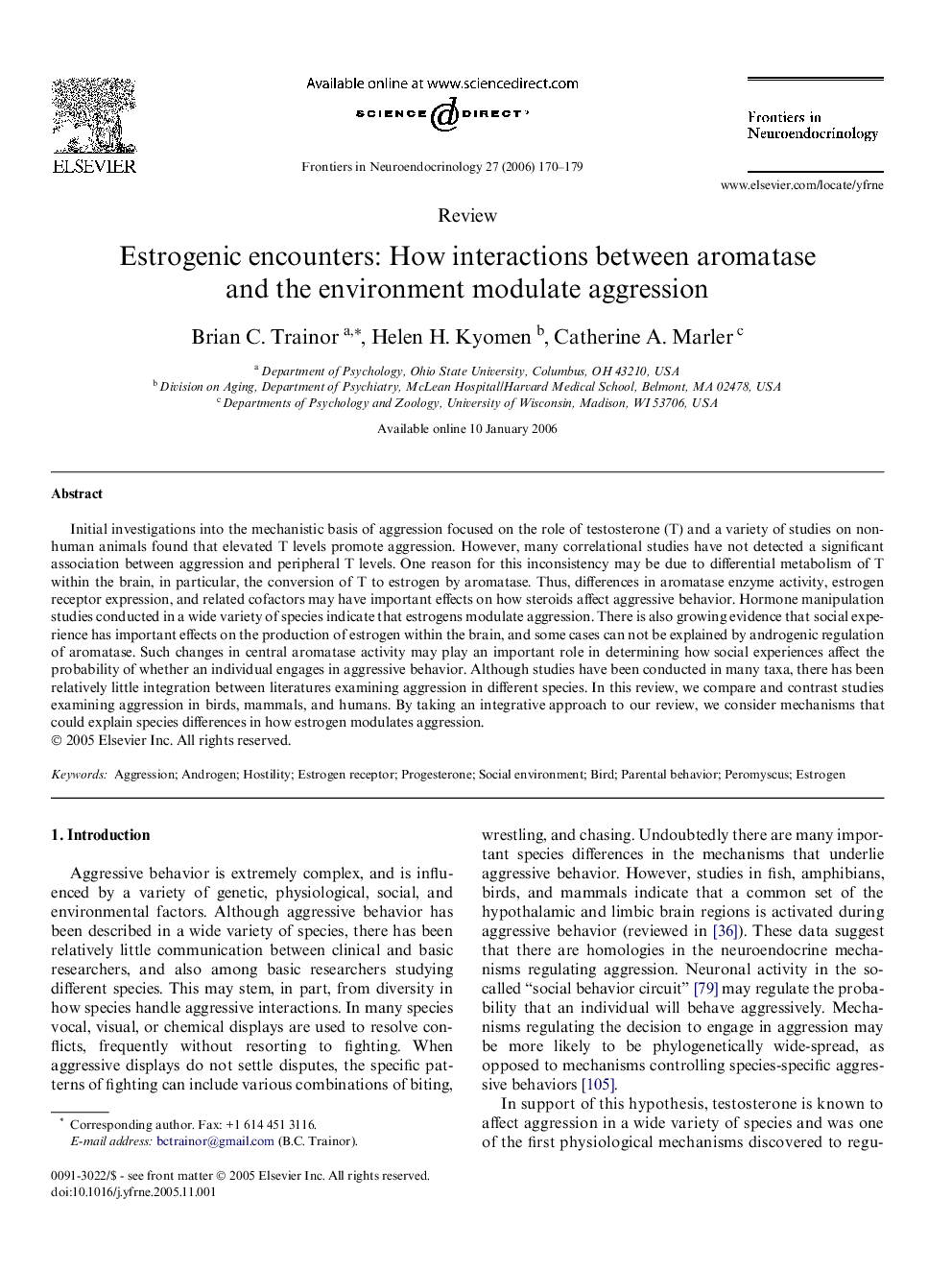| Article ID | Journal | Published Year | Pages | File Type |
|---|---|---|---|---|
| 2799567 | Frontiers in Neuroendocrinology | 2006 | 10 Pages |
Initial investigations into the mechanistic basis of aggression focused on the role of testosterone (T) and a variety of studies on non-human animals found that elevated T levels promote aggression. However, many correlational studies have not detected a significant association between aggression and peripheral T levels. One reason for this inconsistency may be due to differential metabolism of T within the brain, in particular, the conversion of T to estrogen by aromatase. Thus, differences in aromatase enzyme activity, estrogen receptor expression, and related cofactors may have important effects on how steroids affect aggressive behavior. Hormone manipulation studies conducted in a wide variety of species indicate that estrogens modulate aggression. There is also growing evidence that social experience has important effects on the production of estrogen within the brain, and some cases can not be explained by androgenic regulation of aromatase. Such changes in central aromatase activity may play an important role in determining how social experiences affect the probability of whether an individual engages in aggressive behavior. Although studies have been conducted in many taxa, there has been relatively little integration between literatures examining aggression in different species. In this review, we compare and contrast studies examining aggression in birds, mammals, and humans. By taking an integrative approach to our review, we consider mechanisms that could explain species differences in how estrogen modulates aggression.
